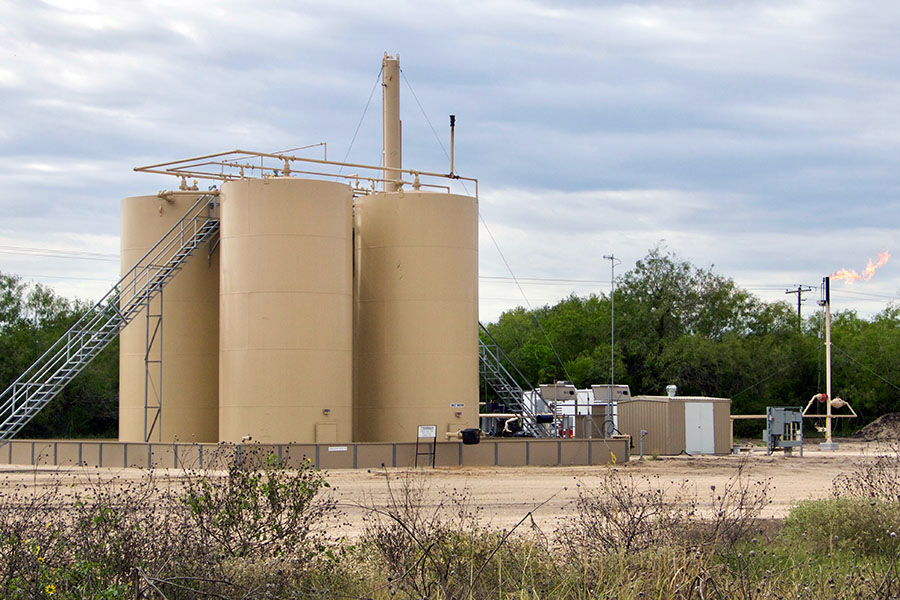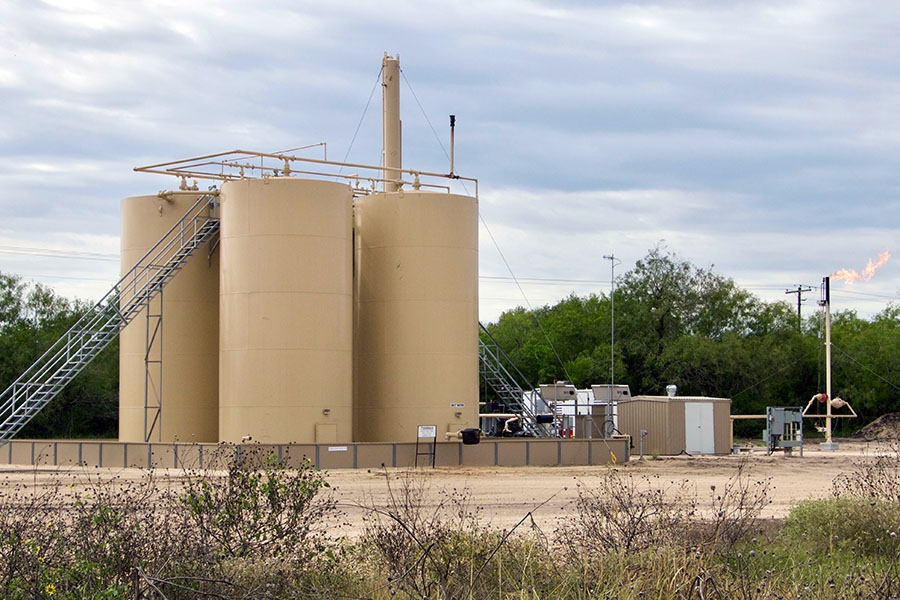 When we evaluate the environmental impact of our energy systems and other products, like steel, plastic or fertilizer, we're missing a big piece of their carbon footprint, according to a new study from Assistant Professor Emily Grubert. Those calculations vastly underestimate the impact of methane leaking from natural gas distribution systems. Coupled with uncertainty around how scientists calculate the global warming potential of methane — the most important greenhouse gas behind only carbon dioxide — the impact of methane on American carbon emissions could be three times higher than currently estimated. (Photo Courtesy: Jeffrey Phillips via Flickr) |
If you're someone who looks at the carbon footprint of the things you buy, you could be significantly underestimating your impact on the environment.
That's because most carbon footprint calculations don't have accurate data about the impact of methane leakage through the natural gas transmission system, according to new research published online March 13 in the Journal of Cleaner Production.
 Grubert |
Methane, the most important greenhouse gas after carbon dioxide, often escapes from distribution systems inadvertently and sometimes is purposely vented to relieve excess pressure. Current assessments vastly underestimate the quantities of gas leaking from these systems, however.
“When you account for underestimates of leakage plus the uncertainty of how we calculate the global warming potential [of methane], the methane impact [on American carbon emissions] is maybe three times what we thought it was,” said Emily Grubert, an assistant professor in the School of Civil and Environmental Engineering.
The effects of that stretch throughout the economy, she said, from generating electricity to producing plastic or steel or fertilizer.
“You're probably going to encounter natural gas if you're doing a carbon-emissions assessment of electricity systems, but you might not realize you're using natural gas numbers if you're doing an assessment of, say, a chair or something like that,” Grubert said.
“Even if you don't care about the energy system, this impacts you: You're probably using plastic or steel or fertilizer that uses a lot of natural gas. So, this methane number that sounds like you don't care about, it actually does matter quite a lot.”
Working with Adam Brandt from Stanford University, Grubert looked at databases used in a process called lifecycle assessment that evaluates the lifetime impact of products, systems and infrastructure. They suspected the databases systematically underestimate the contribution of methane leakage and its environmental impact. Fixing those shortfalls could help decision-makers better understand the carbon footprints of their products.
|
“What I do a lot of the time is use data about very, very large numbers of different kinds of environmental and social impacts, trying to figure out which ones actually matter for the decision you're going to make,” Grubert said. “This is one of those ones that actually matters for the decision.”
“If carbon is the agreed upon indicator that we're using for environmental impact, that is probably a really important thing to get right,” she said.
Grubert suggested making a few small changes in the database tools could make a big difference.
“Methane leakage increases the carbon emissions equivalent for natural-gas-fired power plants by maybe 25 or 30 percent,” she said. “It's a big number. Changing one thing to at least match what we know has this pretty big impact.”
She said better estimates could be important in places like Georgia, where power companies have been converting coal-fired plants to natural gas. If the carbon-emissions reduction of the conversion is significantly lower, they might decide it makes more sense to make those decade-long investments in carbon-free power generation.
Even without a solid handle on the size of the problem, Grubert said, energy providers understand methane leakage could be a problem; some of the other sectors she and Brandt looked at don’t yet.
“Fertilizer people aren't talking about it. The steel people aren't talking about it. The plastics people aren't talking about it. Realizing that those things matter, too, is maybe the other contribution we’re making here.”
In the end, it’s all about helping producers make informed decisions about their carbon emissions, Grubert said.
“We don't really know the number exactly, and we don't really know precisely what's going on. But we know enough to know that [the calculation] we're doing right now is not right.
Related
- “Three Considerations for Modeling Natural Gas System Methane Emissions in Life Cycle Assessment”
- Journal of Cleaner Production
- Emily Grubert
- Adam Brandt

